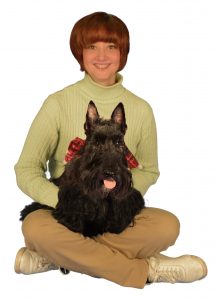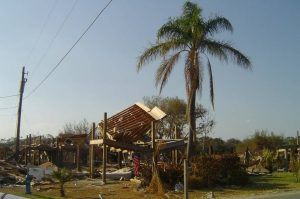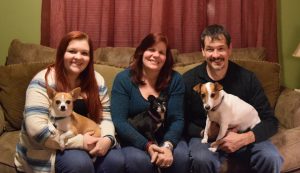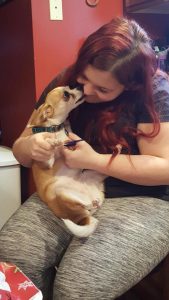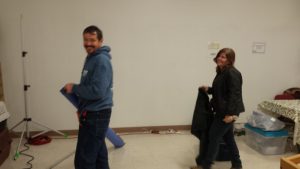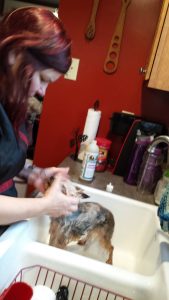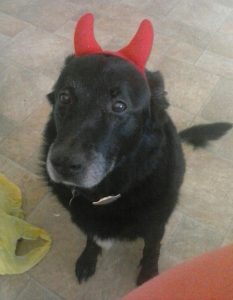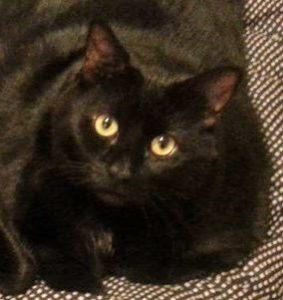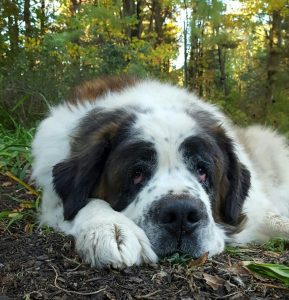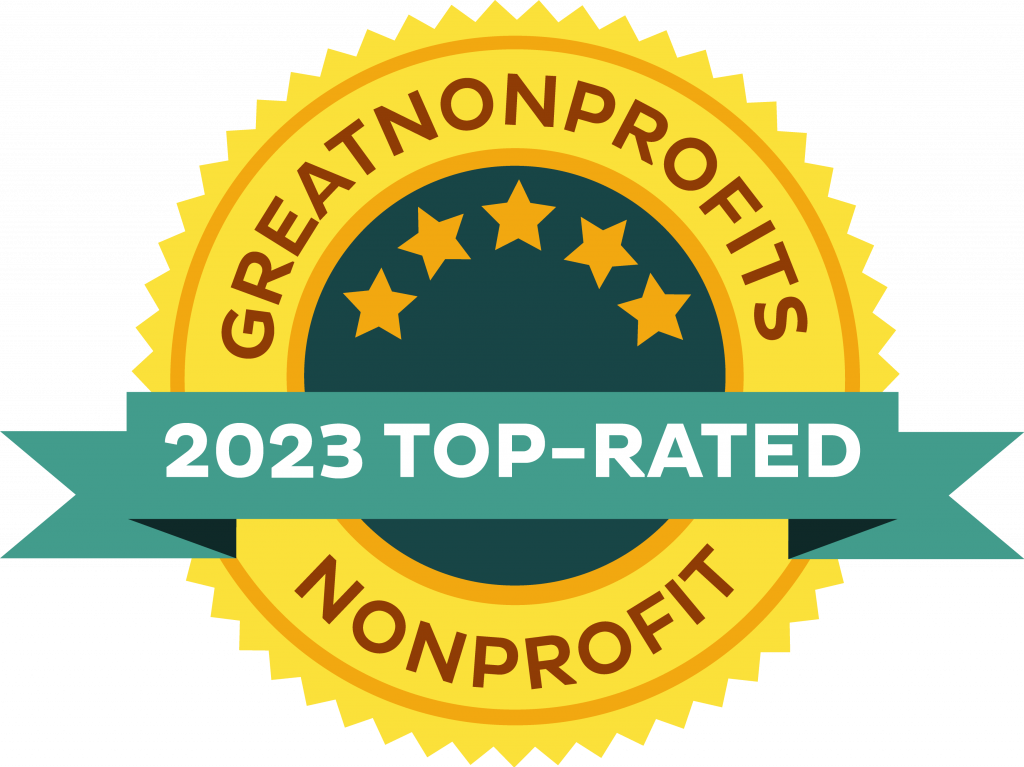We Make It Happen – Volunteer Profile
Barbara Myers, “Robin’s Mom”
If you’ve ever been to one of our pet photo clinics at Benson’s or Pet Supplies Plus, or if you’ve come to one of our tag sales, chances are you’ve met the pretty, soft-spoken lady we all know as “Robin’s Mom,” Barb Myers.
Barb has been one of our most dependable volunteers for years now; and it brightens up our events to have her cheerfully signing folks in for photos or striking a bargain with a tag sale customer. She’s always one of the first to arrive on the scene to help with unpacking the van and setting up an event, and she is always the last to leave after helping get everything torn down and ready to roll out. In short, she is solid gold to our little organization!
According to Barb, “My journey with The Animal Support Project began when I happened upon a photo clinic at Benson’s while shopping with my dog, Robin. Soon we became regulars and are now proud owners of a collection of pictures from various events. It seemed a natural transition to go from a photo clinic patron to a volunteer as I learned more about the organization and all the wonderful support given to pets and their families. I thoroughly enjoy working the photo clinics at Benson’s and Pet Supplies Plus as well as working the tag sales. It is such a pleasure greeting every pet family that participates in the photo clinics as well as taking in the pet fashion. It is so much fun viewing the pride and pleasure each family takes in their special animal whether it is a dog, cat, pig, bunny or even a snake.
Anyone who knows me knows that my pets are my babies. I do not think of them as just a pet, they are part of my family. I feel like my love of pets has found its niche with the Animal Support Project and with the wonderful group of people I have the pleasure in volunteering with.”
When circumstances permit, Robin still tags along on a photo shoot, posing for his latest Fantasy Photo. The little guy shows all the signs of a well-loved, impeccably groomed companion and it is clear his life with Barb is one enormous bowl of gravy. Barb’s devoted to Robin and he to her.
TASP is very fortunate to have so many solid, talented individuals among our volunteers and Barb is a prime example of the exceptional quality of our people. Always polite, professional, thoughtful and genuinely compassionate, is it any wonder why we’re so proud to have her on our team?

